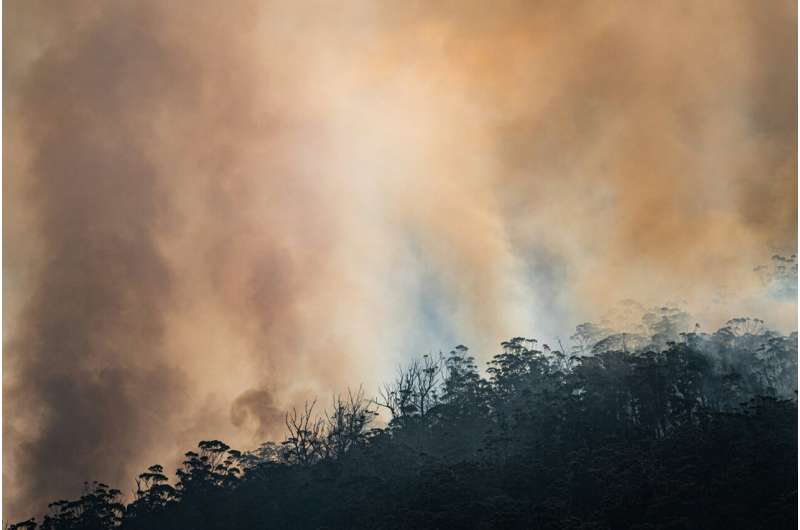Lessons from Canadian Wildfires: Bushfire Smoke and Increased COVID-19 Hospitalizations

A groundbreaking study links wildfire smoke exposure to increased COVID-19 hospitalizations, emphasizing the importance of environmental health preparedness during wildfire seasons.
Recent research highlights the potential health impacts of wildfire smoke exposure, particularly in relation to COVID-19 hospitalizations. A study led by researchers from Queensland University of Technology (QUT) analyzed data from New York State following the 2023 Quebec wildfires, which released significant amounts of PM2.5 (fine particulate matter) into the air. The study found a strong correlation between increased levels of wildfire-related air pollution and a rise in COVID-19 hospitalizations, especially two weeks after the smoke spread across the border. Each incremental increase in PM2.5 was linked to up to a 7% higher risk of hospitalization.
PM2.5 particles are tiny pollutants capable of deeply penetrating the lungs, often worsening respiratory conditions like asthma. The research team used sophisticated statistical models to assess hospitalization trends across 62 counties in New York, revealing consistent upward trends following wildfire smoke events. These findings emphasize that severe environmental events, such as wildfires, can elevate the risk of infectious disease complications.
The study, published in the Journal of Public Health Research & Practice, underscores the importance for public health authorities, especially in Australia approaching its bushfire season, to prepare for potential spikes in COVID-19 cases due to ambient air pollution. The authors advocate for increased environmental health research, particularly studies that include individual-level data, to establish causality between wildfire emissions and infectious disease risks.
Led by Dr. Javier Cortes-Ramirez, the research also involved experts from Griffith University and aims to inform policy-making around air quality and emergency health services. The findings are intended to aid hospitals and health agencies in planning for increased healthcare demands during and after wildfire events.
This research serves as a crucial reminder of the broader health risks posed by natural disasters, especially for vulnerable populations. It highlights the need for integrated strategies that address environmental and public health concerns to mitigate future risks.
Stay Updated with Mia's Feed
Get the latest health & wellness insights delivered straight to your inbox.
Related Articles
Discovery of Eight New Genes Linked to Schizophrenia Enhances Understanding of the Disorder
Researchers at Cardiff University have identified eight new genes linked to schizophrenia, offering vital insights into its genetic basis and paving the way for future targeted therapies.
Innovative Gene Therapy Shows Promise for Treating Rare Fabry Disease
A groundbreaking gene therapy trial shows promising results in treating Fabry disease, potentially offering a one-time treatment option and improving patients' quality of life.
Rising Concerns Over the Overlooked 'Silent Epidemic' of Stimulant Use Amidst Opioid Crisis
A new study reveals a growing, yet under-recognized, epidemic involving stimulant drugs during the opioid crisis, highlighting the need for increased public awareness and targeted interventions.
Enhancing Lung Disease Management with Specialized Singing Programs
A groundbreaking study shows that specialized online singing programs can significantly improve the quality of life and symptoms of people with lung diseases like COPD and ILD, offering a promising non-medication approach to respiratory health management.



